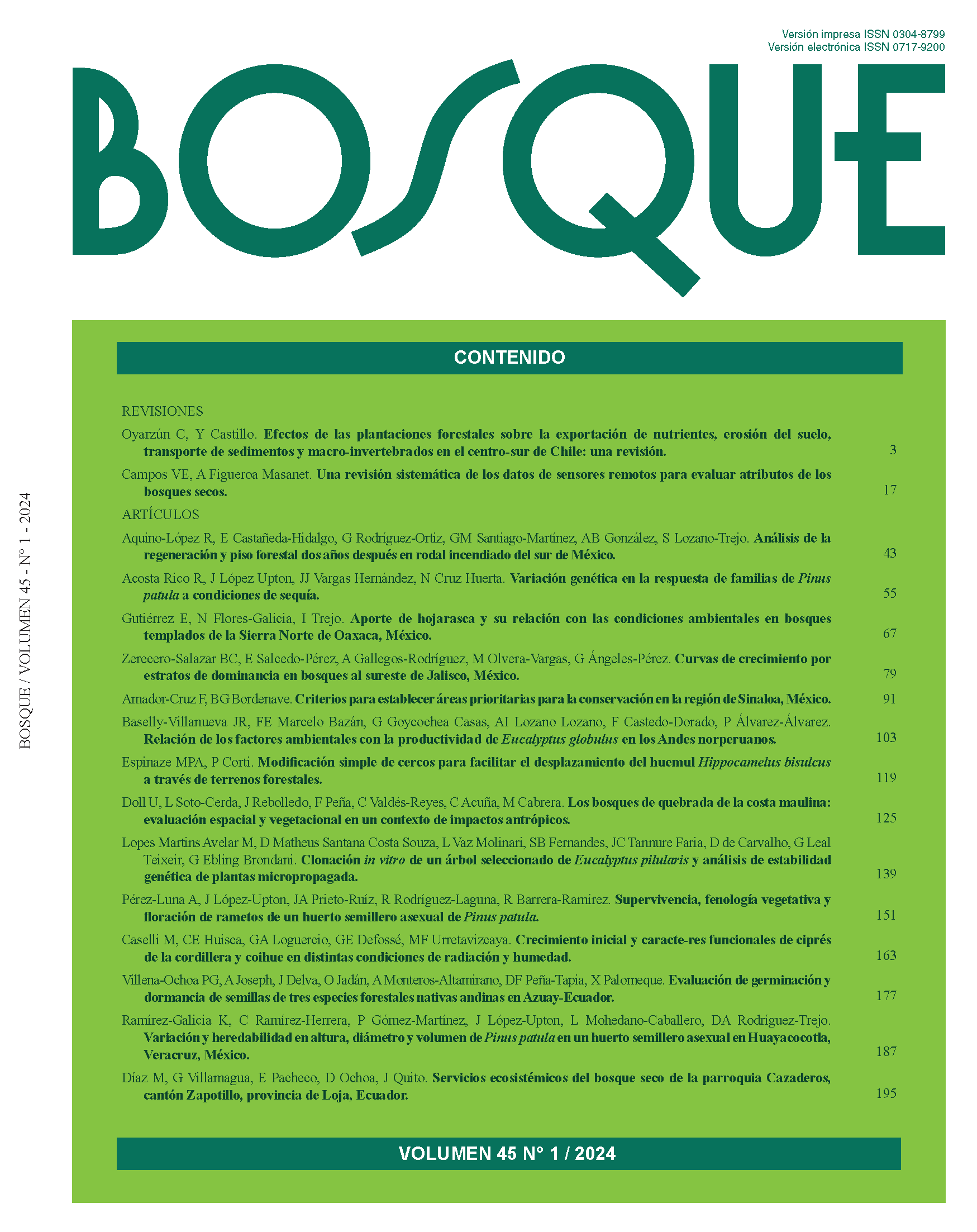Survival, vegetative phenology and flowering of Pinus patula ramets from asexual seed orchard
Main Article Content
Abstract
In asexual seed orchards, genetically improved seed is obtained to produce plants destined for forest plantation programs, which will help increase wood quality and productivity, and reduce cutting cycles. However, asexual seed orchards established in Mexico are not functional and many aspects of their reproductive characteristics remain unknown. The objective of this study was to evaluate the survival, height increase, and vegetative and production (presence) of strobili in juvenile ramets from an asexual seed orchard of Pinus patula owing to the effect of the geographical origin of the ortets. The response variables were statistically analyzed using ANOVA, and when significant differences existed (P < 0.05), Tukey’s mean test was used. Furthermore, using the Pearson test, the correlation between the characteristics evaluated and the bioclimatic variables of the origin of the ortets was determined. Statistical differences were found in survival due to the geographical origin of the ortets and the cloned tree, but not in the other variables. The highest survival was found in ramets with scions from ortets of Tlahuiltepa, Hidalgo and Ahuazotepec, Puebla, both with 94 %. The best clones were: 19 and 20 (Ahuazotepec) and 75 (Agua Blanca, Hidalgo) with 100 % survival. A correlation was observed between vegetative phenology and presence of female strobili with 11 bioclimatic variables. It was concluded that the survival, phenology and production of female strobili of P. patula ramets are influenced by their origin.


 https://orcid.org/0000-0002-6013-6028
https://orcid.org/0000-0002-6013-6028